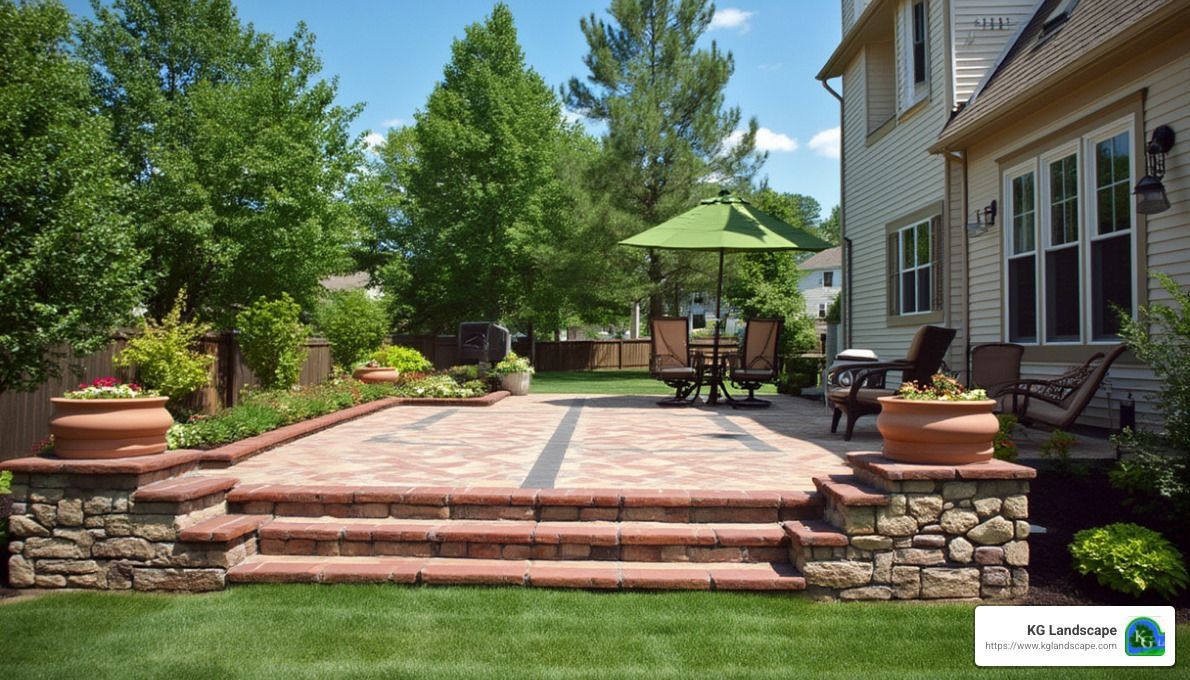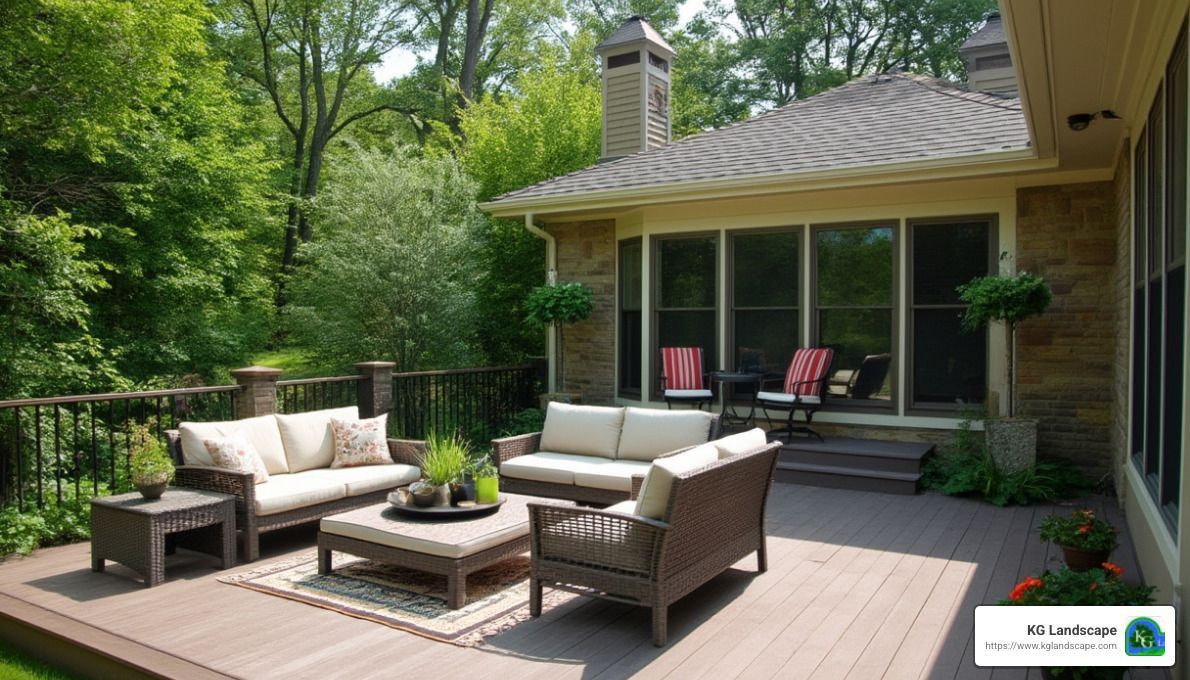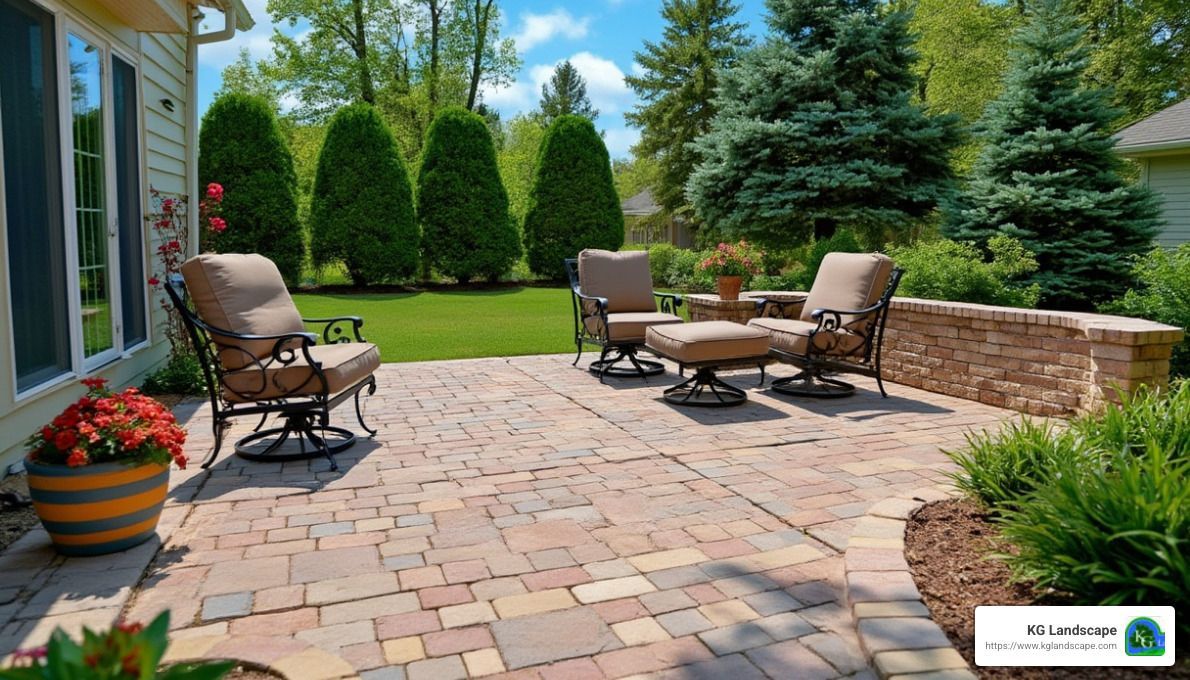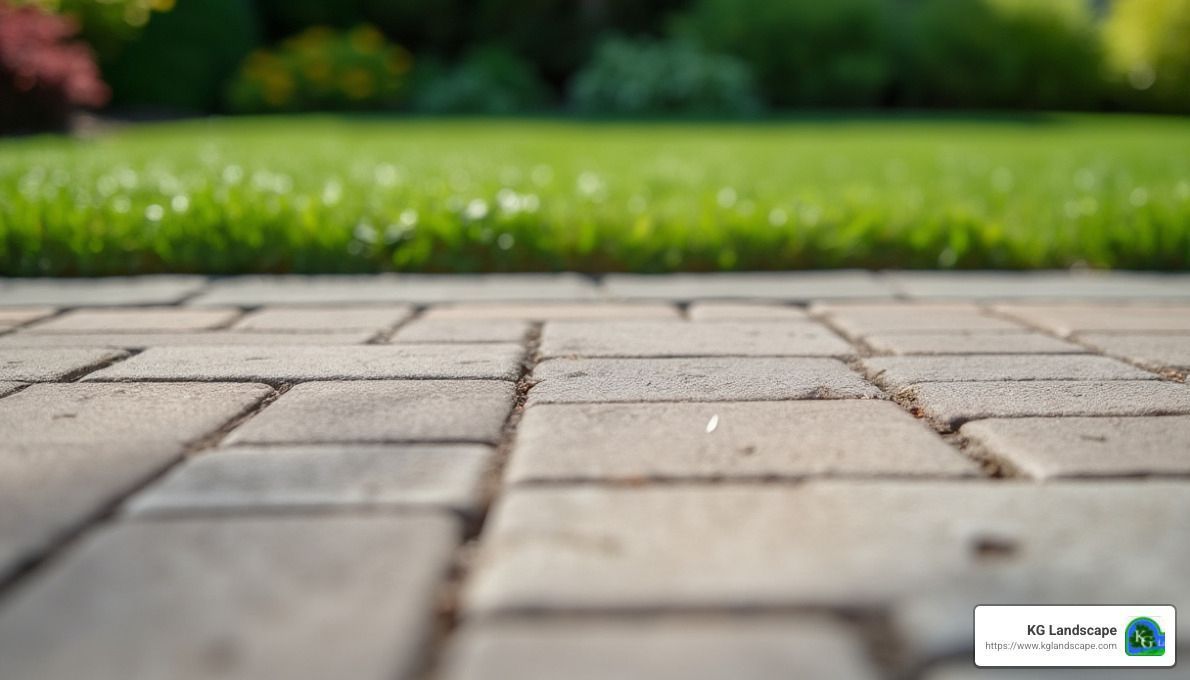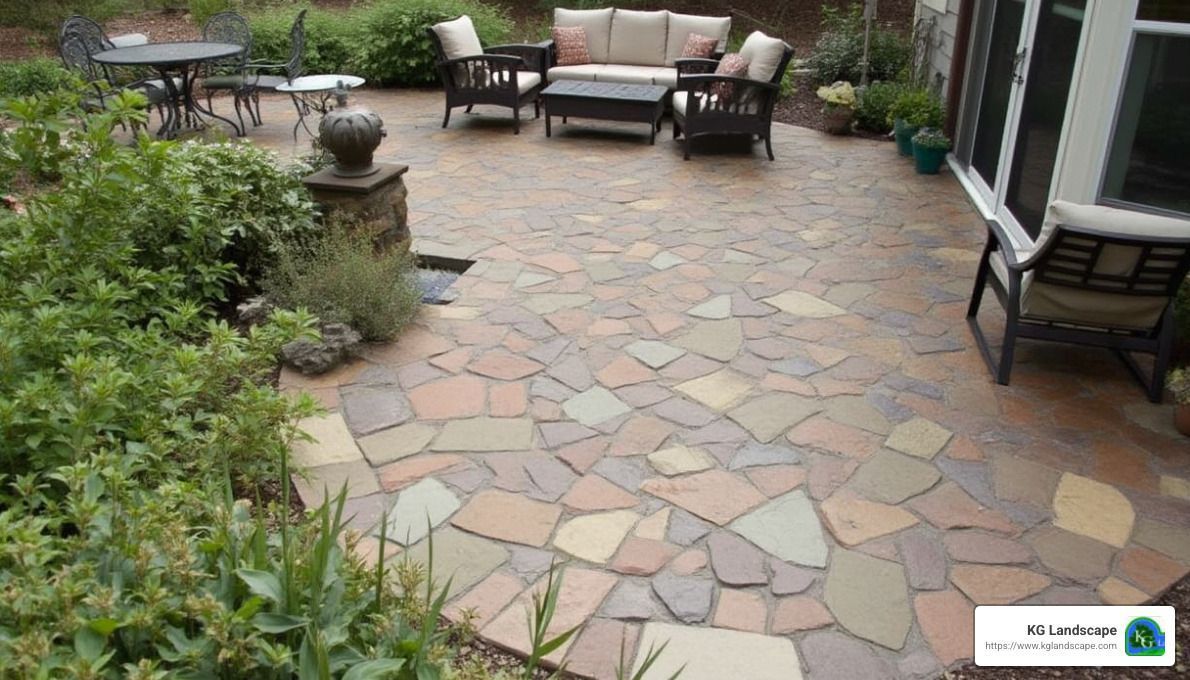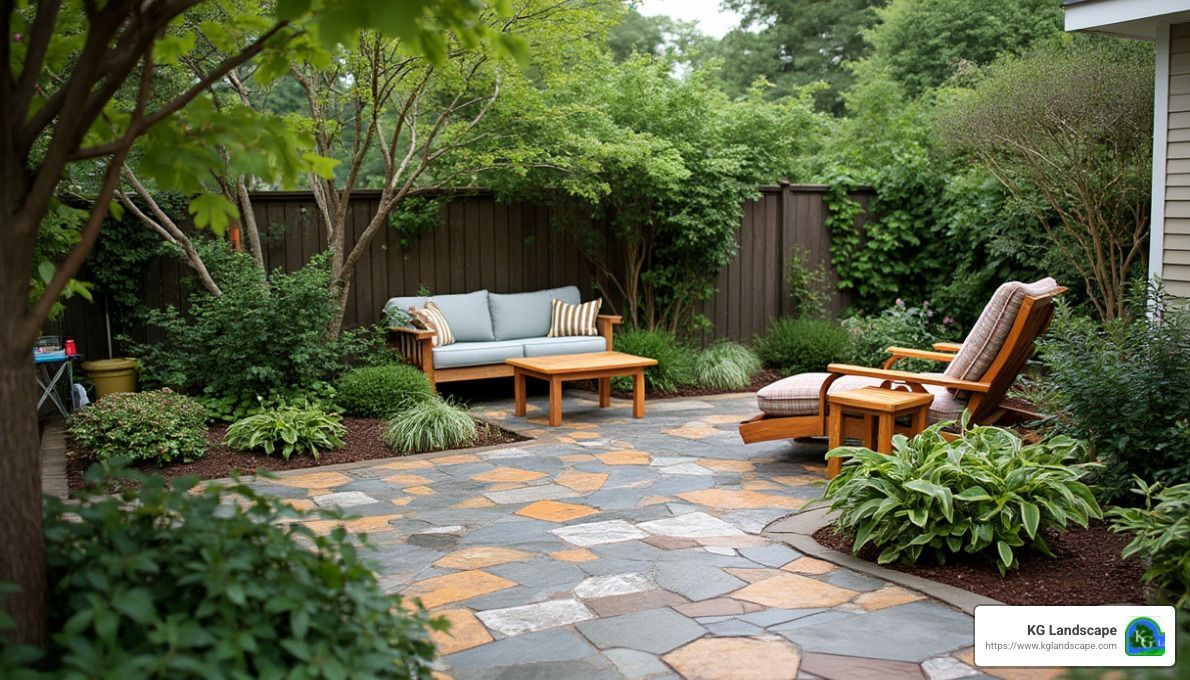7 Ideas for Creating an Eco-Friendly Landscape
Creating an eco-friendly landscape design transcends mere aesthetics.
It represents a commitment to nurturing our natural surroundings, reducing our carbon footprint, and fostering a harmonious coexistence with the environment.
As our awareness of climate change, habitat loss, and resource depletion grows, so does the importance of adopting sustainable practices in our outdoor spaces.
Eco-Friendly Landscape Design Ideas
Creating an eco-friendly landscape isn't just about planting a few trees or shrubs; it's a comprehensive approach that integrates thoughtful design, responsible choices, and mindful maintenance.
1. Sustainable Plant Selection
Choosing the right plants is the cornerstone of creating an eco-friendly landscape. It's not just about aesthetics; it's about selecting flora that thrives naturally in your region while reducing water consumption and maintenance requirements.
Native Plants
Native plants have evolved and adapted to your local climate and soil conditions over centuries. By incorporating them into your landscape, you're inviting nature to do its magic without excessive intervention.
These plants need less water, fertilizer, and pest control because they are already in harmony with the environment. They also provide food and shelter for local wildlife.
Drought-Resistant Species
Water scarcity is a pressing global concern. By choosing drought-tolerant plants, you save water and contribute to water conservation efforts.
These species require low maintenance as they have developed strategies to thrive in arid conditions, such as storing water in their leaves or developing deep root systems. This means less irrigation and more resilience during dry spells.
Perennial Favorites
Perennial plants are those that return year after year without needing to be replanted. Incorporating them into your landscape reduces the need for constant maintenance and replanting.
Perennials can offer a variety of colors, textures, and shapes, ensuring that your garden remains vibrant and appealing throughout the seasons.
2. Water Conservation
Water is a precious resource, and conserving it in your landscape is environmentally responsible and economically smart. These water-saving strategies will help you create an eco-friendly landscape that thrives with minimal water usage.
Rainwater Harvesting
Collecting rainwater is a simple yet effective way to reduce reliance on municipal water supplies. Install rain barrels or cisterns to capture rainwater from your roof.
This harvested rainwater can be used for irrigation, reducing your water bill and lessening the burden on local water sources during dry spells.
Smart Irrigation Systems
Traditional irrigation systems can be wasteful if not properly managed. Consider upgrading to smart irrigation technology.
These systems use weather data and soil moisture sensors to tailor watering schedules and needs, preventing overwatering and reducing water waste.
Xeriscaping
Xeriscaping is an approach that focuses on creating a low-water and drought-resistant garden.
By incorporating xeriscaping principles, such as mulching, grouping plants with similar water needs, and using efficient watering techniques, you can reduce outdoor water consumption while maintaining a lush and vibrant garden.
3. Eco-Friendly Hardscapes
Besides your choice of plants and water conservation efforts, the hardscapes in your landscape can also contribute to eco-friendliness—spaces like driveways, walkways, and outdoor structures.
You can minimize your environmental impact by selecting sustainable materials and innovative designs.
Permeable Paving
Permeable paving materials, such as permeable concrete or porous pavers, allow rainwater to infiltrate the soil below, reducing runoff and preventing erosion.
These materials help with water management and reduce the need for complex drainage systems, making them a cost-effective and environmentally friendly choice.
Recycled Materials
Opt for hardscape materials that are made from recycled content or reclaimed materials. Recycled wood, glass, or metal can be used creatively in landscape design.
Reusing materials diverts waste from landfills and reduces the demand for virgin resources, contributing to sustainability.
Solar-Powered Lighting
Illuminate your outdoor space with solar-powered lighting. Solar lights harness energy from the sun during the day and use it to light your landscape at night.
These energy-efficient lights reduce electricity consumption and add a warm and inviting ambiance to your eco-friendly garden.
4. Organic Gardening
Maintaining an eco-friendly landscape extends to the ongoing care and nurturing of your outdoor space. Embracing organic gardening practices can foster a healthy ecosystem and minimize environmental harm.
Composting
Start a compost pile or bin in your garden to recycle organic waste like kitchen scraps and yard debris. Compost enriches the soil naturally, reducing the need for chemical fertilizers.
Healthy soil supports plant growth and enhances water retention, promoting a thriving garden.
Chemical-Free Gardening
Avoid synthetic pesticides and herbicides, as they can harm beneficial insects and wildlife while polluting water sources.
Instead, opt for organic alternatives, like neem oil or ladybugs, to control pests and maintain a balanced ecosystem.
Attracting Beneficial Insects
Plant flowers and herbs that attract pollinators such as bees and butterflies and natural predators like ladybugs and lacewings.
These beneficial insects help with pollination and act as a natural pest control, reducing the need for chemical interventions in your garden.
5. Wildlife Habitat
Transforming your landscape into a thriving habitat for local wildlife is rewarding and beneficial for the environment. By designing your outdoor space to attract and support various species, you can contribute to biodiversity and create a balanced ecosystem.
Bird-Friendly Landscaping
Designate areas for birdhouses and feeders to provide shelter and food for feathered friends—research local bird species to tailor your offerings.
Plant native trees and shrubs that produce berries, seeds, or nectar to attract a diverse array of birds to your garden.
Butterfly Gardens
Cultivate a pollinator garden such as a butterfly-friendly environment by planting nectar-rich flowers and host plants. Different species of butterflies have specific plant preferences.
Incorporate milkweed to attract monarch butterflies and provide various blooming plants to support butterflies throughout their life cycle.
Wildlife Ponds
Install a small pond or water feature to create a haven for aquatic and semi-aquatic wildlife, such as frogs, dragonflies, and birds.
Include native aquatic plants and rocks or logs to provide various creatures with resting spots and hiding places.
6. Energy-Efficient Features
Reducing energy consumption in your eco-friendly landscape benefits the environment and lowers utility costs, making your outdoor space more sustainable .
Green Energy Sources
Consider installing renewable energy sources like solar panels or wind turbines to power outdoor amenities such as lighting, irrigation systems, or kitchens.
These systems harness the power of the sun or wind, reducing your reliance on non-renewable energy sources and minimizing your carbon footprint.
LED Lighting
Replace traditional outdoor lighting with energy-efficient LED fixtures. LEDs use significantly less energy and have a longer lifespan, reducing maintenance and replacement costs.
Install motion sensors or timers to ensure outdoor lights are only on when needed, further conserving energy.
Smart Technology
Embrace smart technology to optimize energy use in your landscape. Use automation and sensors to control temperature, lighting, and irrigation based on real-time data.
This saves energy, enhances convenience, and ensures that resources are used efficiently.
7. Eco-Conscious Maintenance
Sustainability in landscaping goes beyond the initial design and choices; it extends to the ongoing maintenance of your outdoor space.
Adopting eco-conscious maintenance practices ensures that your landscape remains environmentally friendly and thrives in harmony with nature.
Mulching
Applying organic mulch to your garden beds serves several purposes. It helps retain soil moisture by reducing evaporation, thus reducing the need for frequent watering.
Mulch also suppresses weeds, preventing the need for chemical herbicides, and provides valuable organic matter to the soil as it breaks down.
Sustainable Pruning
Pruning is essential to landscape maintenance, but it should be done thoughtfully. Avoid excessive or improper pruning that can harm plants.
Use proper pruning techniques to maintain the health and shape of your plants, minimizing waste and ensuring their longevity.
Integrated Pest Management (IPM)
Implement Integrated Pest Management techniques to control pests in an eco-friendly way. IPM focuses on preventive measures and minimal chemical use.
Encourage natural predators of garden pests, release beneficial insects, and use organic pesticides only when necessary.
Soil Health
Regularly assess and improve the health of your soil. Healthy soil is the foundation of a thriving landscape.
Test your soil for nutrient levels and pH, and amend it with organic matter like compost to enhance fertility naturally.
Responsible Waste Management
Properly dispose of garden waste and clippings through composting or recycling programs. Avoid burning plant materials, as it releases harmful pollutants into the air.
Consider reusing materials whenever possible, such as repurposing pruned branches for garden structures or mulch.
Watering Efficiency
Continue to track and optimize your irrigation system for water efficiency. Adjust watering schedules based on seasonal needs and rainfall.
Regularly check for leaks and maintain your system to prevent water wastage.
Sustainable Lawn Care
If you have a lawn, adopt eco-friendly lawn care practices. Reduce or eliminate the use of synthetic fertilizers and pesticides.
Consider alternatives like overseeding with drought-resistant grass varieties and allowing your lawn to grow slightly longer to promote water retention.
Conclusion
Eco-Friendly landscape design is a fulfilling practice that benefits your home and the environment. You can transform your outdoor space into a thriving, eco-conscious oasis by embracing sustainable practices. These ideas will help you craft a landscape that celebrates nature's beauty while preserving it for generations.

